fy{T}i - Alphabet Tree

The fundamental purpose of writing is to convey ideas. Our ancestors, however, were designers long before they were writers. Their pictures, drawings, and arrangements, played a prominent role in communication from the very beginning.
The Alphabet Family Tree is about the history and design of the Latin alphabet. It describes how the monumental capitals (the alphabet inscribed on ancient Roman monuments and architecture) evolved from their earliest pictorial ancestors.
In each installment, you will also be treated to a little information about a typeface design, who’s name starts with the corresponding letter of the alphabet.
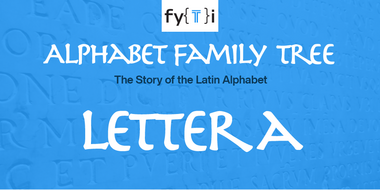
The Letter A
The fundamental purpose of writing is to convey ideas. Our ancestors, however, were designers long before they were writers. Their pictures, drawings, and arrangements played a prominent role in communication from the very beginning. Learn more
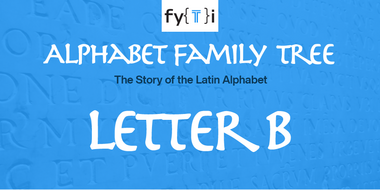
The Letter B
People generally consider shelter the second most important ingredient for human survival. The second letter of the Roman alphabet evolved from the ancient Egyptian hieroglyph attributed to shelter. Learn more
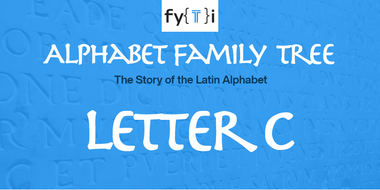
The Letter C
For much of their history, the C and G evolved as the same letter. The Phoenicians named this letter gimel, meaning “camel,” and used it to indicate the sound roughly equivalent to our present-day. Learn more
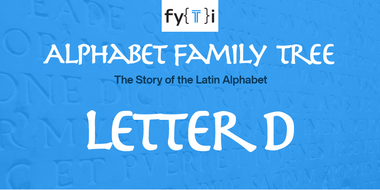
The Letter D
Much of our alphabet is built on a representational concept called “acrophony”. Acrophony means indicating a sound through the use of a picture or name of something that begins with the same sound. Learn more
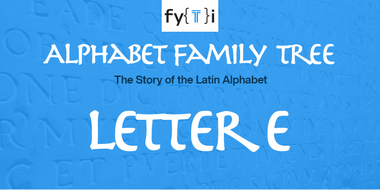
The Letter E
As any Scrabble® player will tell you, e has always been an important letter in the English language. It’s used more often than any other. In the early years of the Internet, the letter achieved near-ubiquitous popularity. Learn more
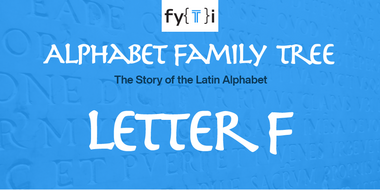
The Letter F
The stately capital F evolved from a 3,000 B.C. Egyptian hieroglyph representing a desert horned snake, called Cerastes. Learn more
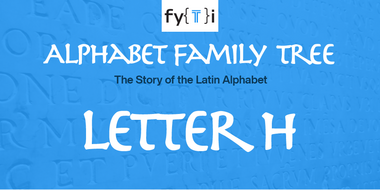
The Letter H
Of all the letters, the H could be labeled as the most boring. Stable and symmetrical, with both feet planted firmly on the ground, the H has been predictable in its design and use, throughout much of its history. Learn more
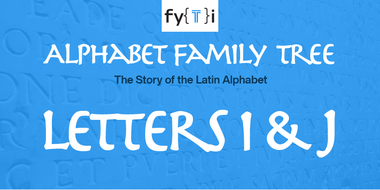
Alphabet Tree - The Letters I & J
The letters I and J follow each other in the alphabet – and look a lot alike. So, it should come as no surprise to discover that our ninth and tenth letters started out as the same character. Learn more
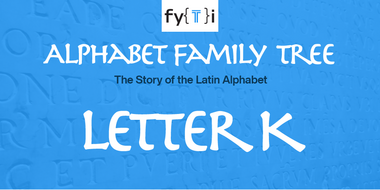
Alphabet Tree - The Letter K
Some letters are slaves to fashion. They’ll change their images for any number of reasons: to satisfy the whim of some cool new writing utensil, or even because they’ve taken up with a different language. The K, however, sticks to the tried and true. Learn more
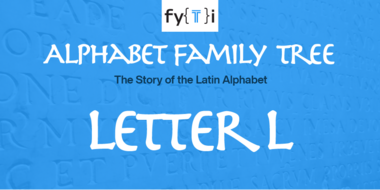
Alphabet Tree - The Letter L
When the Rosetta Stone was discovered in 1799, it sparked considerable interest among scholars and the general public. It was believed that this slab of black basalt, with its identical messages carved in Egyptian hieroglyphics, Egyptian demotic writing, and Greek script, could help unlock the mysteries of ancient Egypt. Learn more
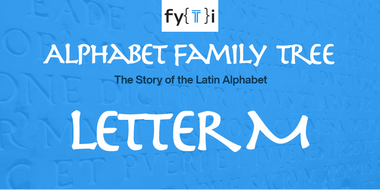
Alphabet Tree - The Letter M
Historians tell us that our current M started out as the Egyptian hieroglyph for “owl.” Learn more
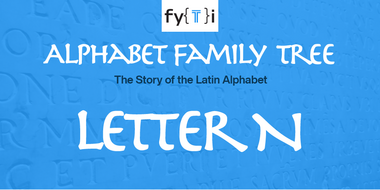
Alphabet Tree - The Letter N
The early form of the N was always closely associated with water. When the sign was used by the Phoenicians more than three thousand years ago, it was called “nun” (pronounced noon), which meant fish. Learn more
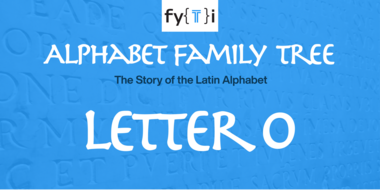
Alphabet Tree - The Letter O
Some believe that our present O evolved from a Phoenician symbol; others consider an even more ancient Egyptian hieroglyph of a knotted cord as the source. Learn more

Alphabet Tree - The Letter P
New words are being invented all the time, to keep up with changes in technology and daily life. This may have been one of the reasons the Phoenicians came up with the innovative notion of a phonetic alphabet: one in which the letters represented sounds. It was an elegant and practical idea, and it’s obviously had a huge impact on the nature of writing to this day. Learn more

Alphabet Tree - The Letter Q
For as long as there have been Qs, designers have been having fun with the letter’s tail. This opportunity for typographic playfulness may even date back to the Phoenicians: the original ancestor of our Q was called “ooph,” the Phoenician word for monkey. The ooph represented an emphatic guttural sound not found in English, or in any Indo-European language. Learn more
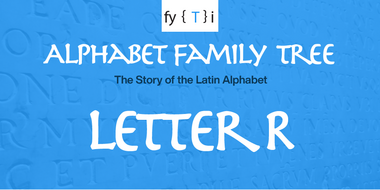
Alphabet Tree - The Letter R
The letter R is a more exceptional character than it first appears. It’s not a P with a tail or a B with a broken bowl; when drawn correctly, the R is rich with subtle details and delicate proportions. It can be the most challenging letter for type designers to create, and the most rewarding. Learn more

Alphabet Tree - The Letter S
Any way you look at it, the S is a complicated letter. Not only is it one of the more challenging characters to draw, but the story of its evolution has more twists and turns than its shape. Learn more
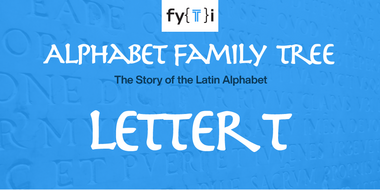
Alphabet Tree - The Letter T
Four thousand years ago, just as today, people who could not write used a simple cross to sign letters and formal documents. In fact, the first name for this ancient symbol actually meant “mark” or “sign.” Learn more
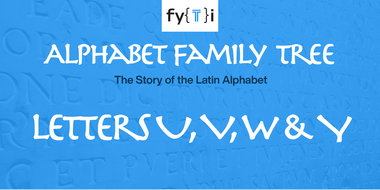
Alphabet Tree - The Letters U, V, W, and Y
The story of U is also the story of our V, W, and Y. In fact, the origins of U even have something in common with the F, the sixth letter of our alphabet. Learn more
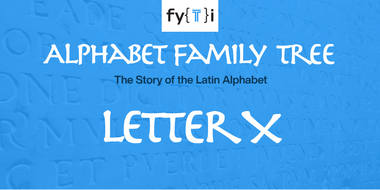
Alphabet Tree - The Letter X
Some may think that the X is virtually an unnecessary letter. Fewer words in the English language start with X than with any other letter. Its sounds are easily rendered by the ‘z’ or ‘ks’ combination. Learn more

Alphabet Tree - The Letter Z
The twenty-sixth letter of our alphabet was the seventh letter in the Semitic alphabet. They called the letter “za” (pronounced “zag”) and drew it as a stylized dagger. The Phoenicians used roughly the same graphic sign, which they called “zayin” and which also meant a dagger or weapon. Learn more

Alphabet Tree - Numbers
The Romans gave us a beautiful and remarkably powerful alphabet – not so much numbers, however. The predecessors to our current numbers were developed in India. Around 500 BC, the brilliant Indian mathematicians of the Vedic period developed the decimal system, based on the number 10. Learn more
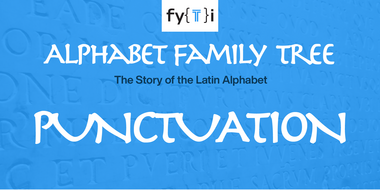
Alphabet Tree - Punctuation
One of the most important aspects of communicating with type is to establish a strong typographic structure. It establishes a clear hierarchy, that communicates information clearly and conveys meaning. Learn more